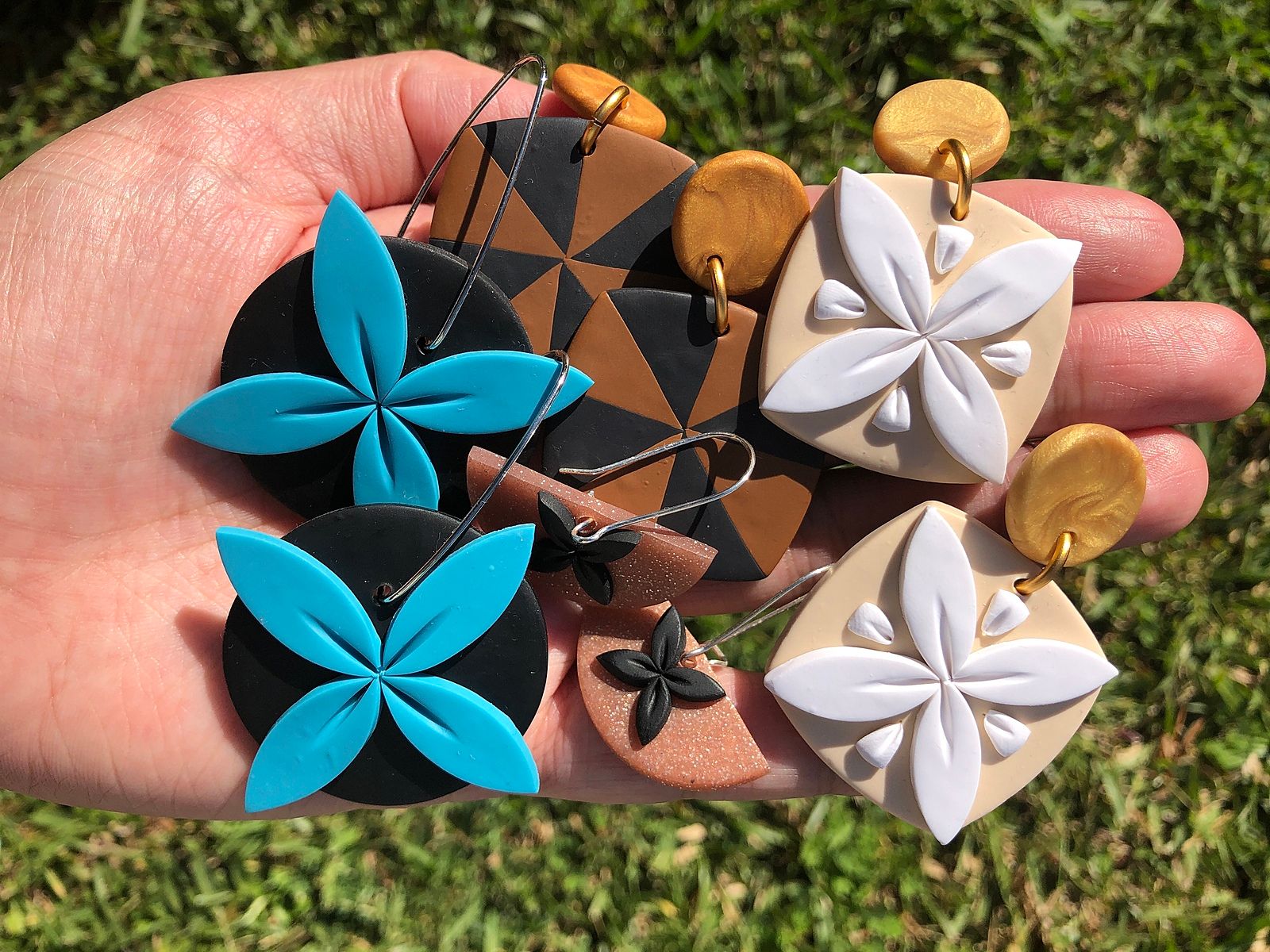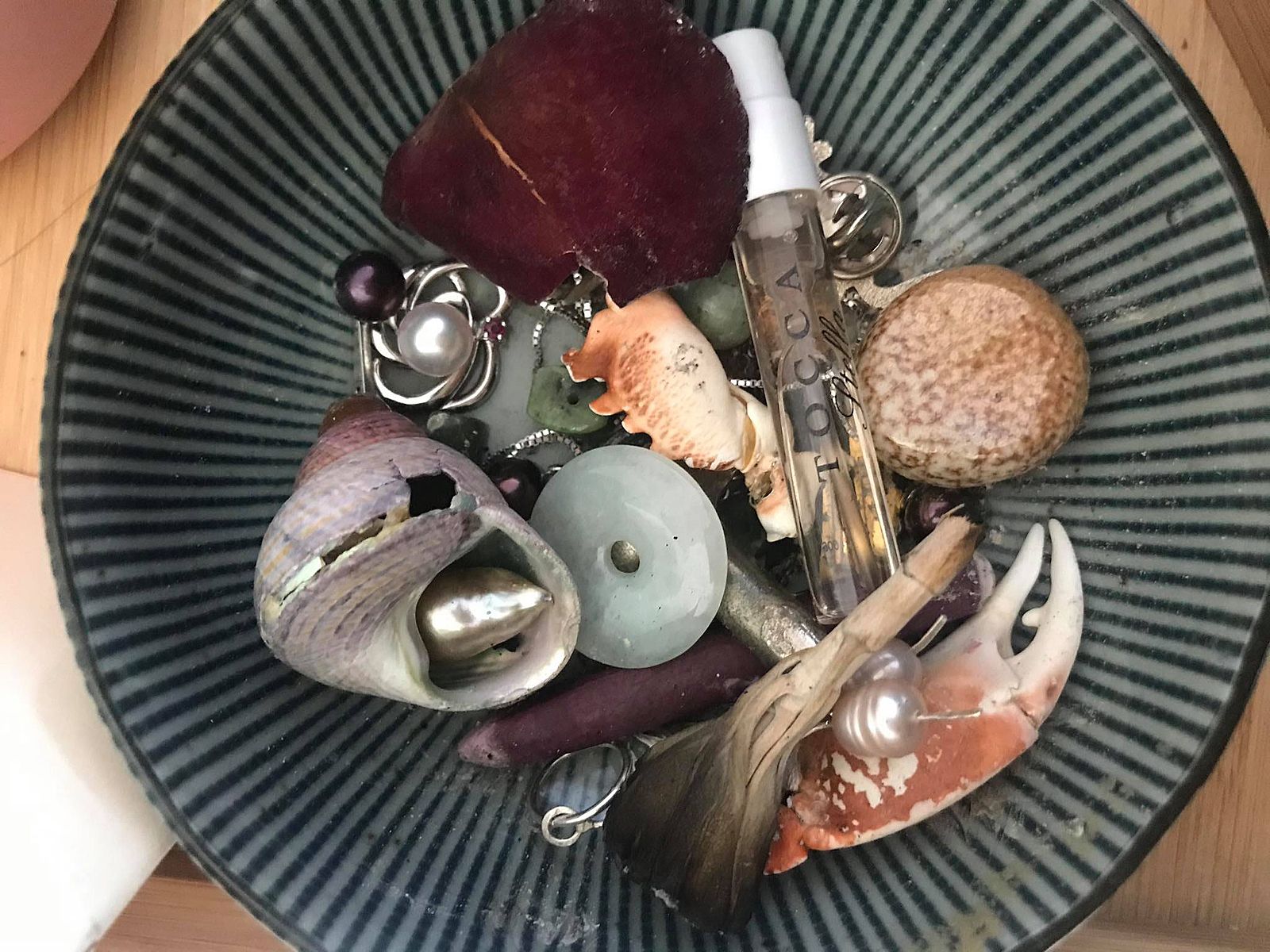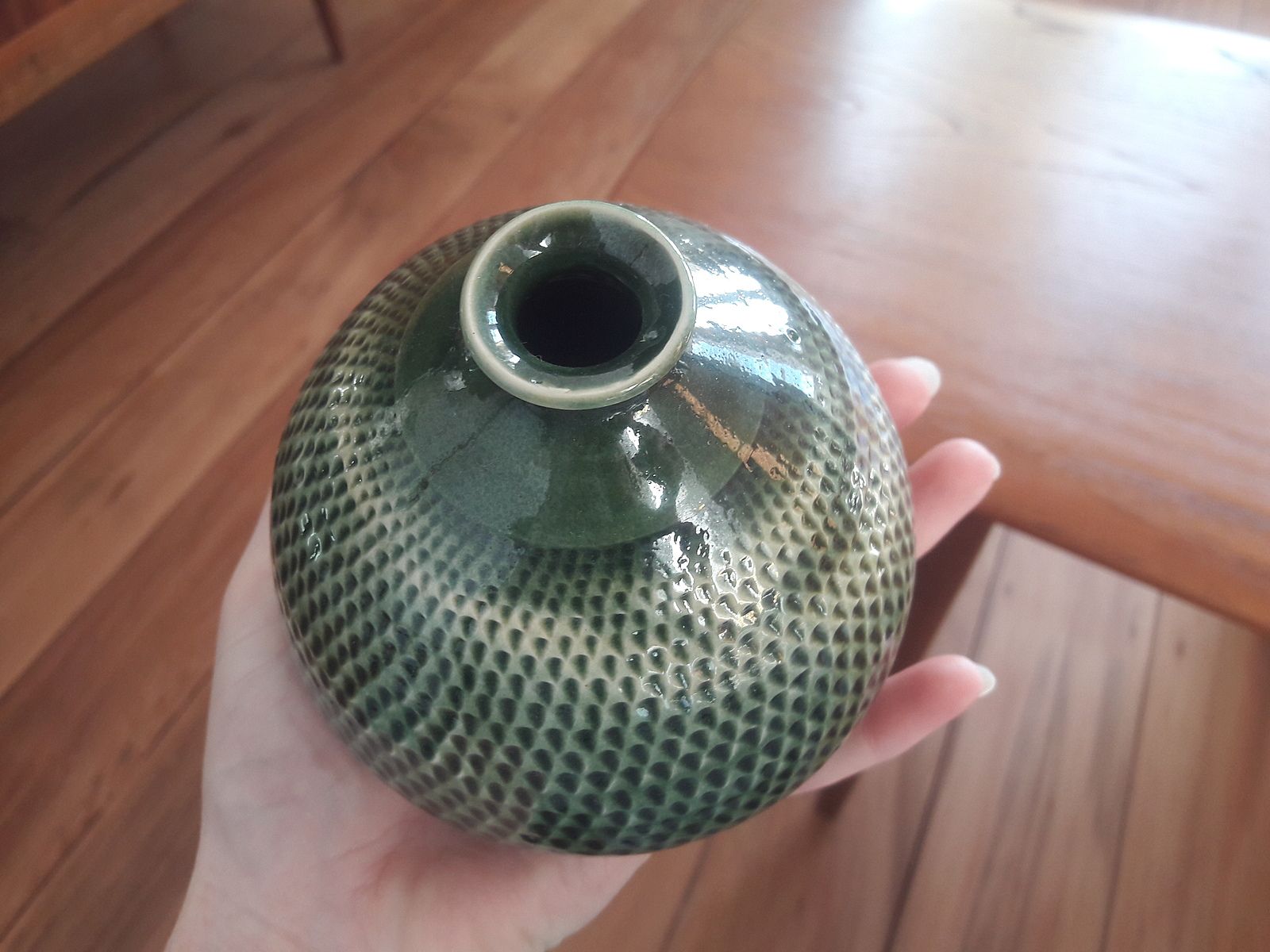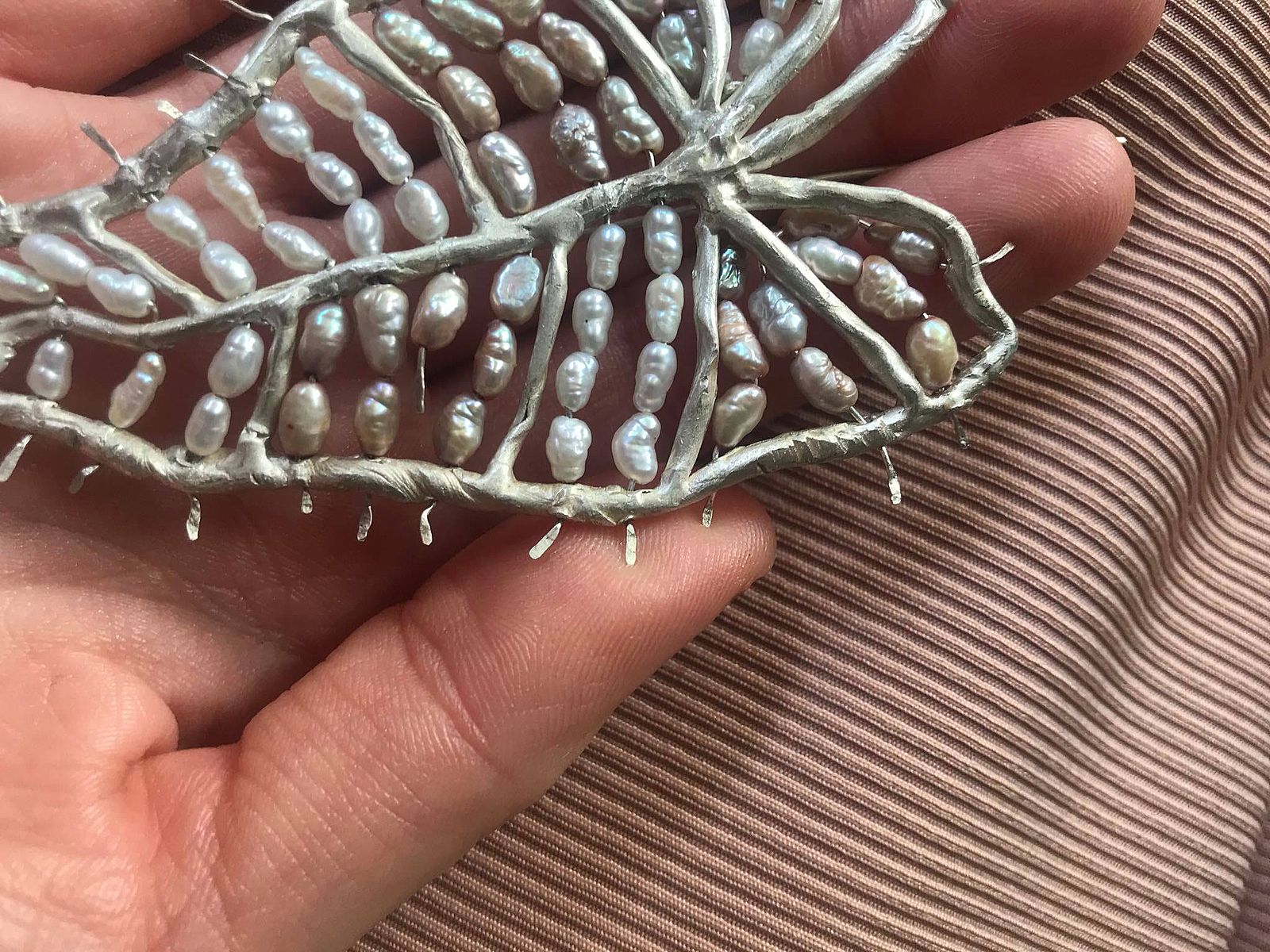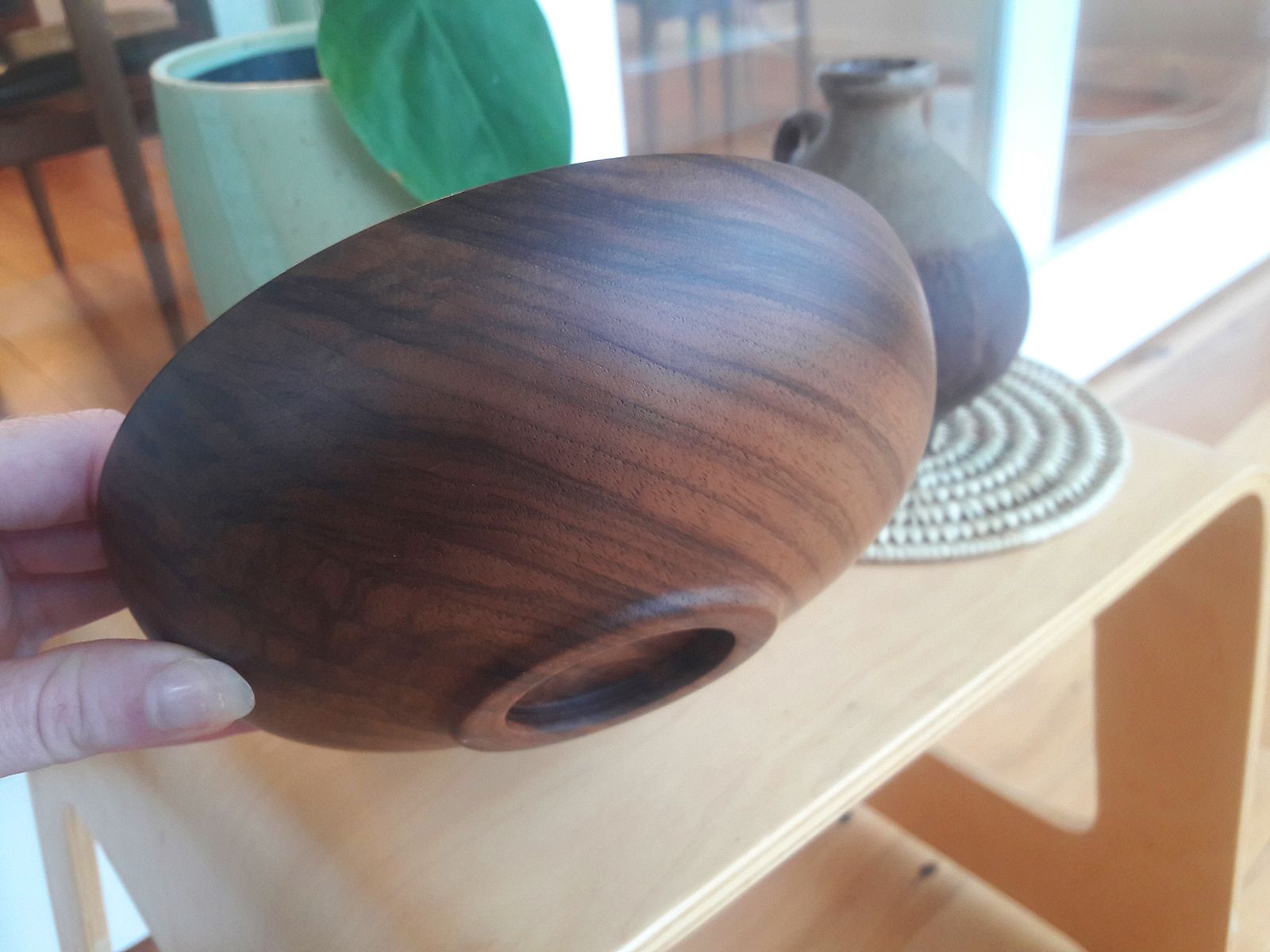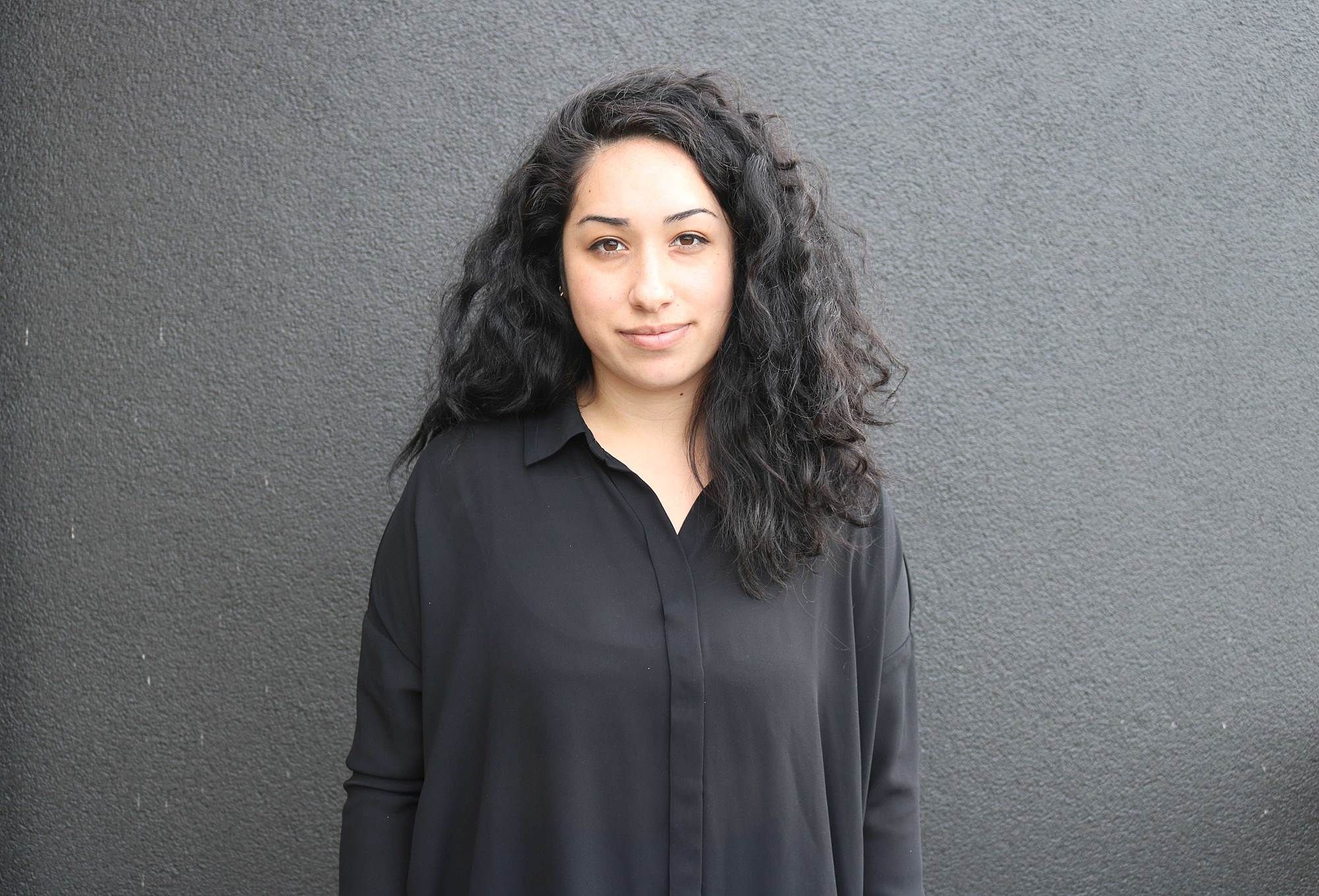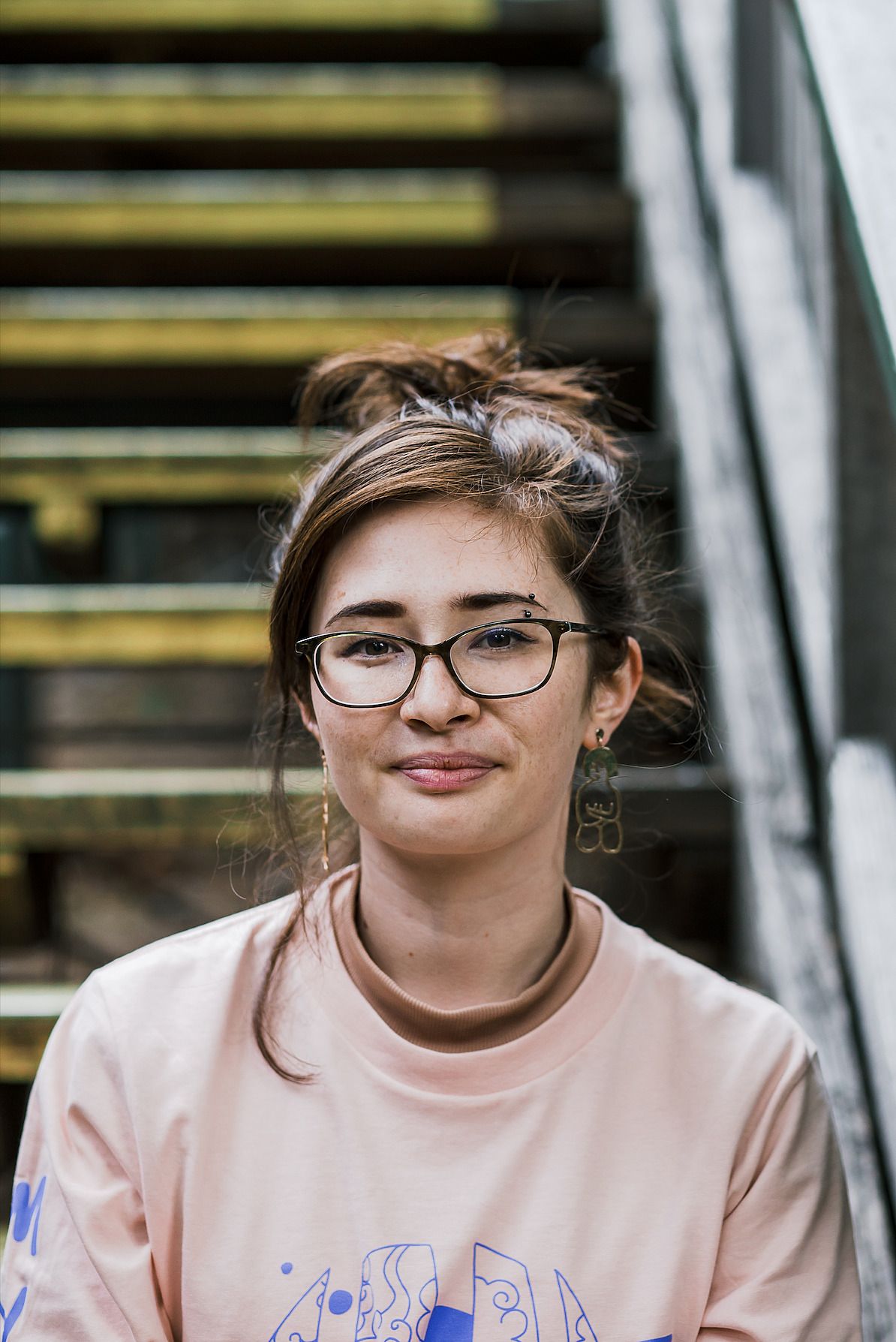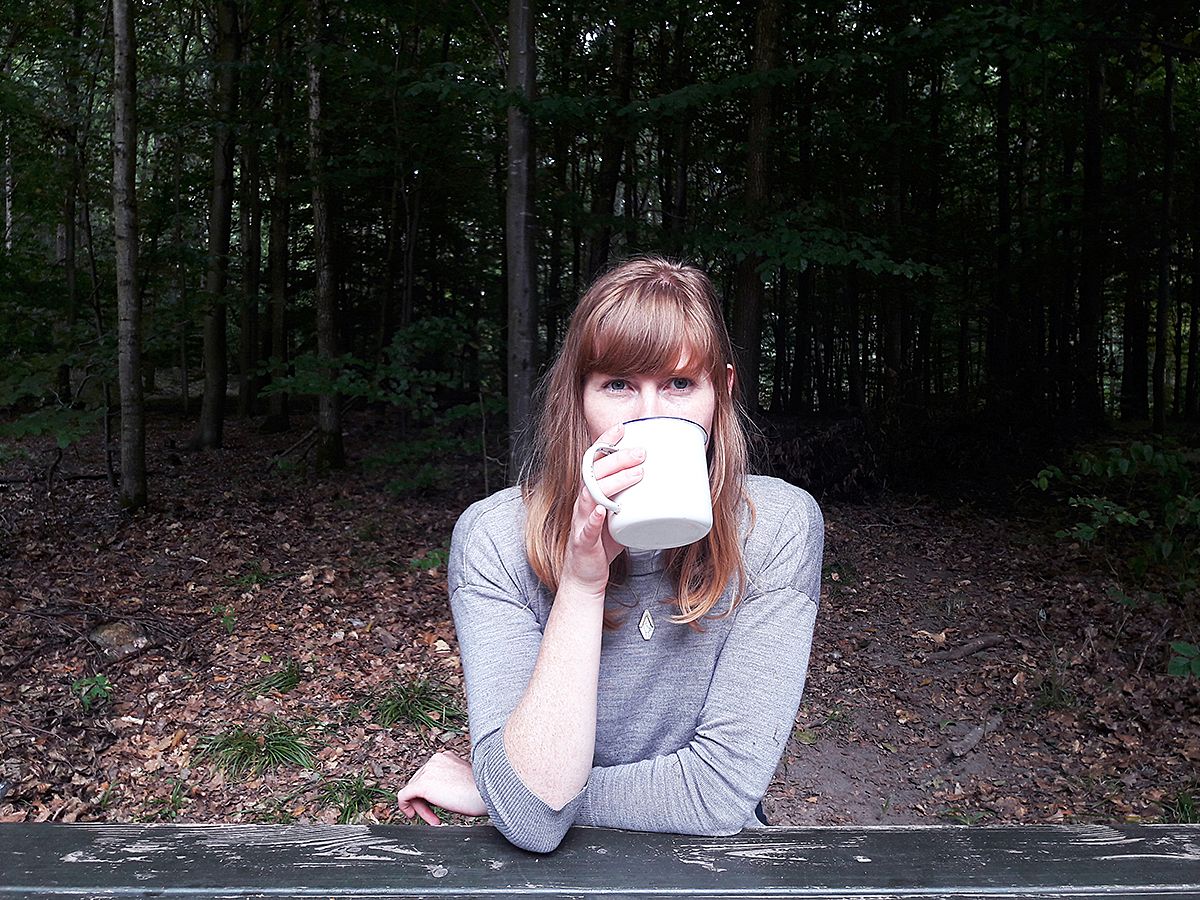Sparking Joy: Craft Objects We Loved in Lockdown
We take a moment to thank the handmade objects that brought us joy while stuck at home.
Lockdown is over, at last. It seemed like a good moment to reflect on the handmade objects that brought us joy or comfort when we were stuck at home. Will it make us sentimental? Yeah, probably.
Aolele earrings
Lana Lopesi
Lockdown has been hard! In this hectic swirl of strangeness and uncertainty, the little things that bring us joy are fewer and farther between, but seemingly more important than usual. For six weeks now I have found myself rotating 3 outfits, which range between ‘bed-chic’, ‘mediocre’ and the very occasional ‘feeling myself’, but it’s been accessories that have been my personal little rays of sunshine, and in particular a few pairs of clay earrings made by Leone Samu Tui (Sāmoa, Ngati Kahungunu) for Aolele. When Leone is not making for Aolele she is the Associate Curator, Documentary Heritage (Pacific Collections) at Auckland War Memorial Museum and a māmā.
Clay earrings made by Leone Samu Tui (Sāmoa, Ngati Kahungunu) for Aolele
Adorning myself in Aolele is like suiting up in a Moana cosmopolitan battle get-up, ready to take on the structural racism of the day. It’s the cherry-on-top for being an unapologetically brown gal baddie. Wearing them with their bright colours and clear Moana references, is at most, like placing a political pou in the ground, announcing that I am here. And at least, like right now, it’s a performative pick-me-up when all you can muster is the need to “fake it till you make it”. As someone who is desperately missing my cultural communities, wearing my Aolele around the house gives me strength and makes me feel good. Right now, they’re exactly what I need. – LL
Vanessa's bedside objects
Bedside objects
Vanessa Crofskey
For a month at the start of this year I lived out of a suitcase, on couches and floor mattresses. It was a time of heightened fragility; I didn’t have a place where I could stay for long, where I could be alone. All my necessities were kept in a beat-up red suitcase, all my objects were packed into the dark hum of a cold shipping container. I missed my objects badly.
Not to bring up Marie Kondo, but to bring up Marie Kondo: the relationship between you and the objects you keep around you is sacred and nourishing. The tiny bedside nothings I keep are like small physical prayers. Under lockdown, returning to that sense of pleasure and safety has felt paramount to my ability to continue staying sane.
In the corner of my room I keep a shrine of trinkets. They’re placed in shallow plates, woven baskets and heavy-lidded ceramic containers. My most prized items are housed in a cheap blue bowl bought from Daiso, atop a bamboo bath shelf.
In this bowl , the leg of a beach crab lies on a dried rose petal, dusty with the ashes from a burnt piece of sage. Half a broken leg from a miniature silver piano is stuck in blu tack, a relic gifted to me by my grandmother. Pearls; gifted, bought and given, scattered pendants from broken chain necklaces dot my treasure chest like expensive cereal. My 外婆 gave me some of her jade as a secret gift, that last night me and my brother visited Malaysia. I keep one piece of her, small and gourd-shaped in here, this home of kept objects which is like my heart-centre. Everything intermingles with nearby scents. Drops of lavender spilled across an oil burner, dried sticks of cut rosemary, perfume vials of blood-orange and oak, sandalwood ash drifting irreverent.
Many of these things have somehow survived moving house, all of the yearly flat clear-outs where most of my stuff gets broken, thrown or lost in debris. I like to think they’ve survived something together, that the time spent in each other’s company has made them all friends. They like being next to each other, and I like being next to them. – VC
Ceramic vase made by Gary Bowden.
Green vase
Hannah Newport-Watson
Running my hands over this little vase brings me a sense of calm. The high-gloss glaze might be at odds with the dimpled texture and uneven colour but somehow it works perfectly. Not as overt in its fruit-likeness as a Katherine Smyth jug, it does nonetheless have a botanical feel, with a shape like an overgrown fig. It draws my eye across the room as I sit on the couch, editing or more likely getting distracted online. I think about how meditative it must have been for the potter to make all those little pip-marks on the surface of the wet clay.
Gary Bowden is a Takaka potter, one of the cohort of older-generation potters in the Golden Bay area, where I grew up, many of whom sell their pots in home-studio-galleries. These studios are treat to visit: you drive up a deceptively long, pot-holed driveway and look for an entrance, usually half-hidden behind a trellis covered in grapes or passionfruit. Bowden sells his pots in Artisans, an artists’ co-op in Takaka, and often as not when I pop into the shop, he’s behind the counter. Mostly his pottery is prosaic, earthy tableware, but this one is different. Never have I used it as a vase; it is just a pleasing object. – HNW
Paradise brooch by Dangerous Goods
Paradise awaits
Vanessa Crofskey
On the eve of Level Three I woke up to sunlight and ordered a brooch. Not just any brooch, a Dangerous Goodsbrooch called Paradise.
Paradise is a silver leaf intricately studded with vintage pearls. It reminded me of a miniature abacus, which is a common good-luck charm that Chinese people keep to bring fortune.
I bought it before I could tell myself not to, because for four weeks I had not been able to buy anything except what was ‘essential’. I met Hannah Davis-Gray, the person behind Dangerous Goods, through art school, through those common circles of acquaintances you end up sharing with half of the creative institutions in Auckland.
Hannah’s jewellery is intricate and ornate. There’s a sense of unpolished-ness about them, of not hiding how the item was made. The silver of the leaf looks like how a tree branch would grow, carrying different heft and weight where the joints meet. This brooch feels light and airy, a beaded curtain set in silver. The pearls, non-uniform in shape, look like tiny glowing drops of rain.
I got an Instagram message from Hannah to say my parcel had been dropped off in my letterbox. I jogged out the door in slippers, unable to stop myself from breaking into a gigantic, goofy grin.
I’m a Libra, so vanity is like my oxygen. But there really is something to be said for beauty amidst survival, and how much of it I saw that morning. The satisfaction of opening a package, of not just looking but gazing at a beautiful object for the first time. Holding something precious that belongs to you is a pleasure rush to the heart and the brain.
Lockdown has caused me treacherous anxiety. All the talk of essentials/non-essentials quickly slips me into the habits of good-bad categorising, of repressing my appetite, of shutting myself away from everything that is not deemed ‘crucial’. I create mental rules in my brain, then I punish myself if I break them. I tell myself I cannot afford, I should not, I can’t set foot, I won’t. It puts me back in a place where I am in a hidey-hole surviving, where I cannot afford to give myself levity.
But pleasure isn’t frivolous. It’s essential for us all to hold onto. It helps us to see past our present circumstances. We can only hope for a piece of paradise, to treat each moment as if it is something alive. – VC
Handmade walnut bowl
Walnut bowl
Hannah Newport-Watson
I guess it’s long been a cliché, New Zealand blokes and their sheds. Really we’ve all needed a workshop or a space to tinker in over lockdown. I love it when artist Ruby Solly tweets about her shed. Jenny Bornholdt writes poems in a shed at the bottom of her garden; I can almost walk around it in my mind’s eye. I don’t have a shed – it’s fine, I just take over the dining table – but my partner does, lucky guy. And so did his grandfather, a retired schoolteacher and self-taught woodworker extraordinaire. Hard of hearing but refusing to wear a hearing aid, Noel could be irritable and argumentative. But there was one thing that clearly brought him joy and that was making things from wood. His garage workshop, with a lathe and immaculately ordered and sharpened tools, was a thing of wonder. (My own granddad’s garage workbench was far less impressive, though he still put it to excellent use making us wooden swords.) My partner’s grandparents’ house is full of furniture Noel made – stunning pieces that would look at home in an expensive vintage shop; you would assume were made by a professional craftsman, because, really, they were.
There was another thing Noel liked, and that was sharing his knowledge and seeing the beauty of wood, wooden things, and well-made things, appreciated. He was generous with his workshop and his tools. When we visited, my partner would often disappear into the workshop (still does, actually), busy with some project, overseen by his grandfather, who would then bequeath an old plane or a chisel as a parting gift. It must have been on one of those visits that my partner made this simple walnut bowl – in secret, and completely unknown to me until a few months later, when he gave it to me at Christmas time. It’s a special object to me now, because it reminds me not only of my partner, who makes beautiful things in his own little shed, but also of his grandfather Noel, and the connection they shared. – HNW

